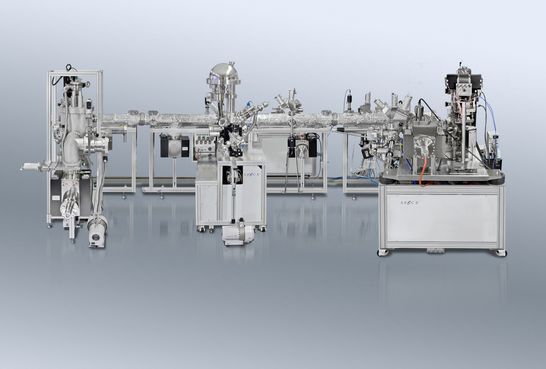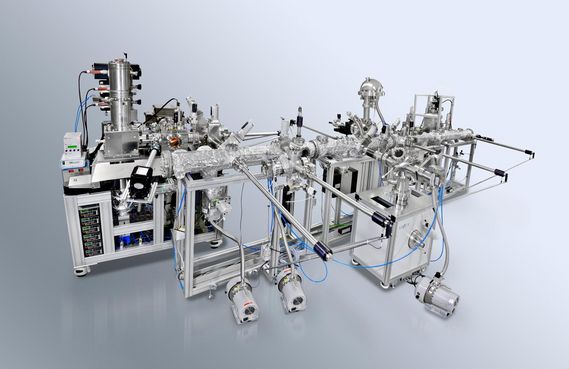 Detail
DetailMultimethod System with XPS, LEEM and SPM
Linear Transfer System with XPS, LEEM and SPM for Wide Range of Modern Surface Science Applications
The SPECS Multimethod System with LTS, XPS, LEEM and SPM is a fully equipped UHV analysis system for modern surface science applications. All systems are designed and manufactured at the SPECS headquarter in Berlin. A special engineering group personally accompanies the system process from the order placing until the final acceptance. Our engineers are dedicated to highest quality and usability of the system during design, testing and setup on site. Once the system is in full operation, a professional service team in our HQ and our worldwide branch offices takes care of a smooth and stable operation.
The SPECS linear transfer system (LTS) connects different satellite modules by a UHV vacuum tube with integrated sample carrier. Up to 5 slots for multiple samples can be moved automatically between the system interconnection points. The flexible design allows a cost efficient upgrade with additional transfer segments. Each segment can host up to two full scale satellite system modules. In this case, the LTS system comes with XPS, LEEM and SPM (Scanning Probe Microscopy) satellite chambers.
The LEEM (Low Energy Electron Microscopy) system gives access to structural, chemical, electronic and magnetic properties of local dynamic surface processes. The SPM (Scanning Probe Microscopy) system allows local surface structure analysis with atomic resolution and local spectroscopy on atomic scale.
The typical vacuum in SPECS systems is better than 2 x 10-10 mbar achieved during assembly at SPECS. A final end pressure in the 10-11 mbar range is achievable. The standard pumping configuration consists of and ion getter pump (IGP), a titan sublimation pump (TSP) and a turbo molecular pump (TMP) with connecting to a roughing vacuum. Different pumping configurations are available on request including cryopumps, larger pumping schemes and also NEG pumps.
All systems are equipped with a rigid frame and included bake-out tents with automated heating systems. An electronics cabinet hosts all relevant electronics, a main power supply and a TCP/IP based communication platform for the control units.
All SPECS systems are ready for interconnections to other SPECS modules. Also the connection to existing systems can be tested on request.

